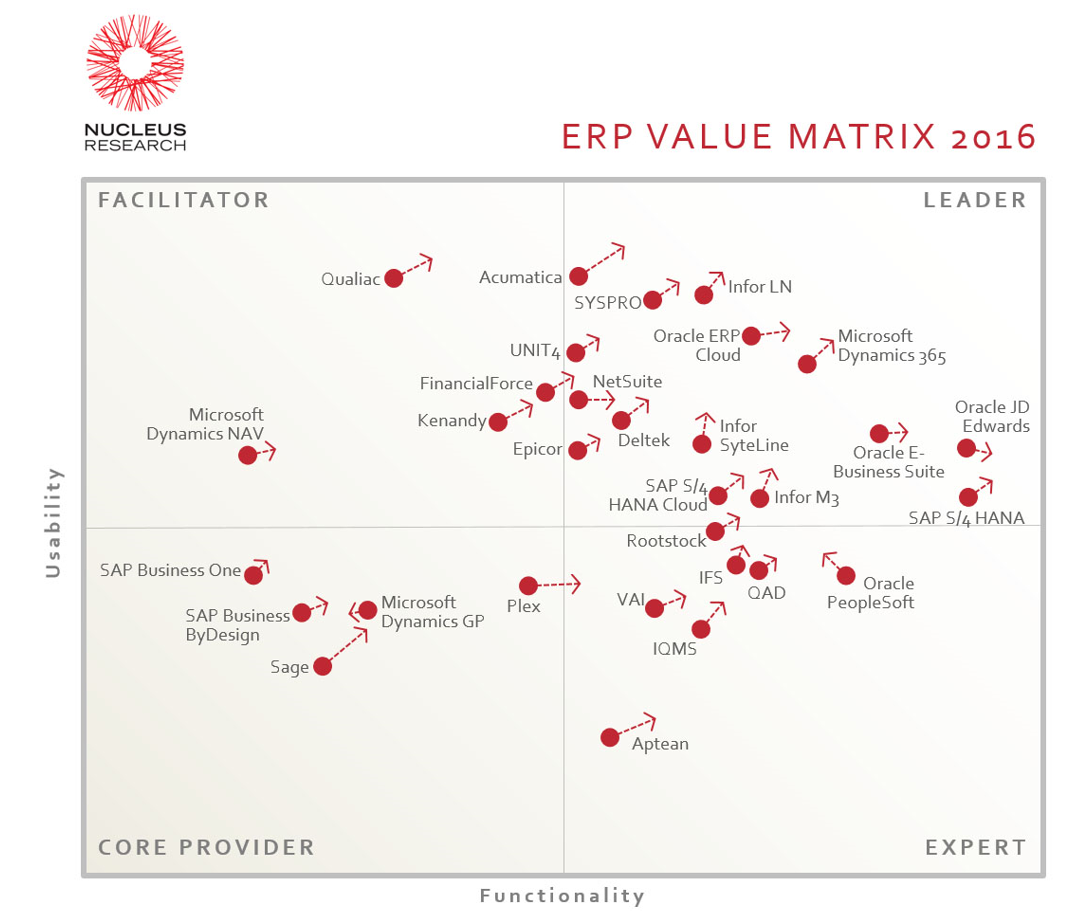The short answer is: It leads the pack.
The long answer is a bit more in depth. Nucleus Research’s ERP Technology Value Matrix 2016 compares ERP systems based on their usability and functionality for 2016, speaks to the shifting competitive landscape of ERP systems in 2016, and outlines why each system is placed into its respective category.
Let’s start with changes in the ERP market. Some big players have been in the market for a while (Microsoft, SAP, Oracle, etc.) and are adopting new strategies to keep up with consumer interests. The increasing use of cloud-based ERP systems has produced the biggest shift in ERP product offerings, exciting consumers and driving vendors to perfect their cloud-based solutions (especially since many vendors are currently phasing out their earlier solutions). What consumers expect from their ERP system is shifting as well. According to Nucleus Research, some features have become “standard” for ERP systems in this modern landscape, including “native mobile applications, web-based user interfaces, configurable dashboards and landing pages”. Consumers are more informed than ever, and expect technology innovation and improved capabilities in current ERP system offerings.
Nucleus Research’s ERP Technology Value Matrix 2016 analyzes 31 ERP systems, and places each system into one of four categories: Core Providers indicate low usability and low functionality. Facilitators signify high usability and low functionality. Experts represent low usability and high functionality. Leaders refer to both high usability and high functionality. Microsoft Dynamics 365 for Operations (the evolution of Microsoft Dynamics AX) is positioned as a Leader.
Microsoft Dynamics 365 for Operations is firmly in the middle of the Leader portion of this matrix, while the systems closer to the dividing lines signify lower usability and functionality within the Leader category. This position “highlights Microsoft’s ability to deliver an end-to-end cloud product suite” according to Nucleus Research’s analysis. When discussing Microsoft’s improvement in 2016 for the areas of usability and functionality, the research company adds, “Microsoft delivers additional functionality through its extensive partner and independent software vendor (ISV) network”. This calls attention to Microsoft’s comprehensive ecosystem of partners, all of which add to the high functionality score of Microsoft Dynamics 365 for Operations.
While there are a multitude of other ERP solutions in Nucleus Research’s ERP Technology Value Matrix 2016, Microsoft Dynamics 365 for Operations seems to be leading the pack with a strong position in the Leader category.
If you would like to learn more about Microsoft Dynamics 365 for Operations, please email us or call 860-781-6470.



